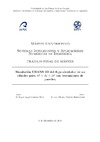Please use this identifier to cite or link to this item:
https://accedacris.ulpgc.es/jspui/handle/10553/16192
| DC Field | Value | Language |
|---|---|---|
| dc.contributor.advisor | Padrón Hernández, Luis Alberto | es |
| dc.contributor.author | Moreno Díaz, Miguel Ángel | es |
| dc.contributor.other | Instituto Universitario de Sistemas Inteligentes y Aplicaciones Numéricas en Ingeniería (SIANI) | en_US |
| dc.date.accessioned | 2016-03-19T03:30:15Z | - |
| dc.date.accessioned | 2018-05-15T10:51:48Z | - |
| dc.date.available | 2016-03-19T03:30:15Z | - |
| dc.date.available | 2018-05-15T10:51:48Z | - |
| dc.date.issued | 2015 | en_US |
| dc.identifier.uri | https://accedacris.ulpgc.es/handle/10553/16192 | - |
| dc.description | Máster Universitario en Sistemas Inteligentes y Aplicaciones Numéricas en Ingeniería (SIANI) | en_US |
| dc.description.abstract | The numerical prediction of the induced vibration for vortex shedding has been the focus of many researches to date, using computational fluid dynamics tools to solve this task. To know the vortex shedding frequency of objects with cylindrical shape has engineering applications to prevent the resonance frequency of submarine wires, drilling risers and other submarine structures. The current Master Thesis is a study of the k-epsilon and k-omega turbulence model performance, applied to several Reynolds numbers, from ten thousands to one million, to predict the vortex shedding around and infinite cylinder inside of an incompressible flow. To solve this problem the OpenFOAM tool is used, which numerical schemes are based on the concept of Finite Volume Method. | en_US |
| dc.description.abstract | La predicción numérica de las vibraciones inducidas por el desprendimiento de vórtices ha sido el foco de muchas investigacios hasta la fecha. Saber la frecuencia de desprendimiento de vórtices en objetos de forma cilíndrica tiene aplicaciones en ingeniería para prevenir la frecuencia de resonancia en en cables submarinos, drilling risers y otras estructuras submarinas. El presente trabajo es un estudio de la adecuación de los modelos de turbulencia k-epsilon y k-omega, aplicados a diversos números de Reynolds, desde diez mil hasta un millón , para predecir el desprendimiento de vórtices en un cilindro infinito en el seno de un fluido. Se usa la herramienta OpenFOAM, el cual basa sus esquemas en el concepto de los volúmenes finitos. | en_US |
| dc.format | application/pdf | es |
| dc.language | spa | en_US |
| dc.rights | by-nc-nd | es |
| dc.subject | 330532 Ingeniería de estructuras | en_US |
| dc.subject | 120326 Simulación | en_US |
| dc.title | Simulación URANS 2D del flujo alrededor de un cilindro para 104 ≤ Re ≤ 106 con tratamiento de paredes | es |
| dc.type | info:eu-repo/semantics/masterThesis | en_US |
| dc.type | MasterThesis | en_US |
| dc.compliance.driver | 1 | es |
| dc.contributor.departamento | Departamento de Ingeniería Civil | es |
| dc.identifier.absysnet | 720526 | es |
| dc.identifier.crisid | - | - |
| dc.investigacion | Ingeniería y Arquitectura | en_US |
| dc.rights.accessrights | info:eu-repo/semantics/openAccess | es |
| dc.type2 | Trabajo final de máster | en_US |
| dc.utils.revision | Sí | en_US |
| dc.identifier.matricula | TFT-37763 | es |
| dc.identifier.ulpgc | Sí | en_US |
| dc.contributor.buulpgc | BU-INF | es |
| dc.contributor.titulacion | Máster Universitario en Sistemas Inteligentes y Aplicaciones Numéricas en Ingeniería | es |
| item.fulltext | Con texto completo | - |
| item.grantfulltext | open | - |
| crisitem.advisor.dept | GIR SIANI: Mecánica de los Medios Continuos y Estructuras | - |
| crisitem.advisor.dept | IU Sistemas Inteligentes y Aplicaciones Numéricas | - |
| crisitem.advisor.dept | Departamento de Ingeniería Civil | - |
| Appears in Collections: | Trabajo final de máster | |
Page view(s)
122
checked on Mar 10, 2024
Download(s)
245
checked on Mar 10, 2024
Google ScholarTM
Check
Share
Export metadata
Items in accedaCRIS are protected by copyright, with all rights reserved, unless otherwise indicated.
